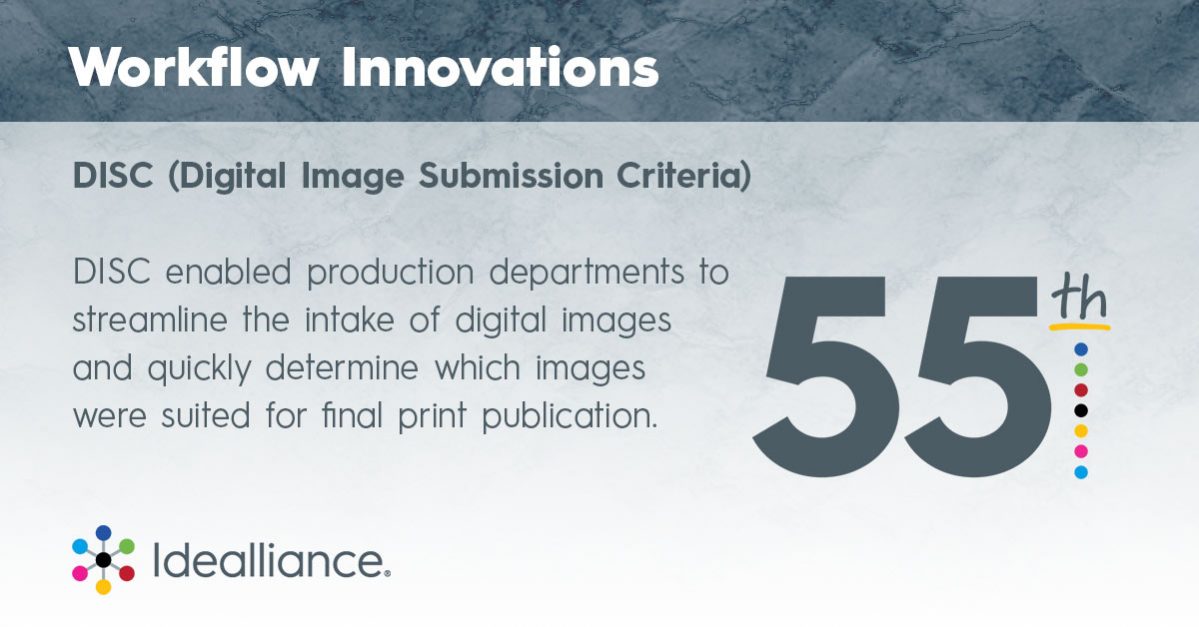Idealliance understands that productivity and efficiency are at the center of an effective workflow. We have created standards-based, automatable processes, enabling every part of the print supply chain to change, grow, and prosper. Over many decades, as both disrupter and architect, Idealliance has reimagined future workflows, shaping the way our supply chain partners operate. This series explores the history of many of those workflow innovations.
What is DISC?
DISC (Digital Image Submission Criteria)
Between 2000 and 2003, emerging digital photography technologies caused a revolution in how images were submitted to magazines and advertising agencies for print publication. In that brief time, photographers shifted from providing film-based images to submitting nearly all images captured by digital cameras. To address this massive workflow shift, Idealliance developed “The Digital Image Submission Criteria (DISC) Specification” in 2003.
DISC specified minimum acceptable digital image quality based on intended print destination and defined a set of basic image metadata fields that enabled the seamless intake of digital images into print production workflows. The DISC working group was led by Time, Inc. and contributions were made by the magazine publishing members. DISC enabled production departments to streamline the intake of digital images and quickly determine which images were suited for final print publication.
Workflow Innovations from Idealliance
- The SPECTRUM Connection
- SGML (Standard Generalized Markup Language)
- PRISM (Publishers Requirement for Industry Standard Metadata)
- XML (eXtensible Markup Language)
- DISC (Digital Image Submission Criteria)
- G7 Calibration
- PQX (Print Quality eXchange)
- Mail.XML
- papiNet
- PROSE XML
- Mail.dat
- SWOP (Specification for Web Offset Publications)

